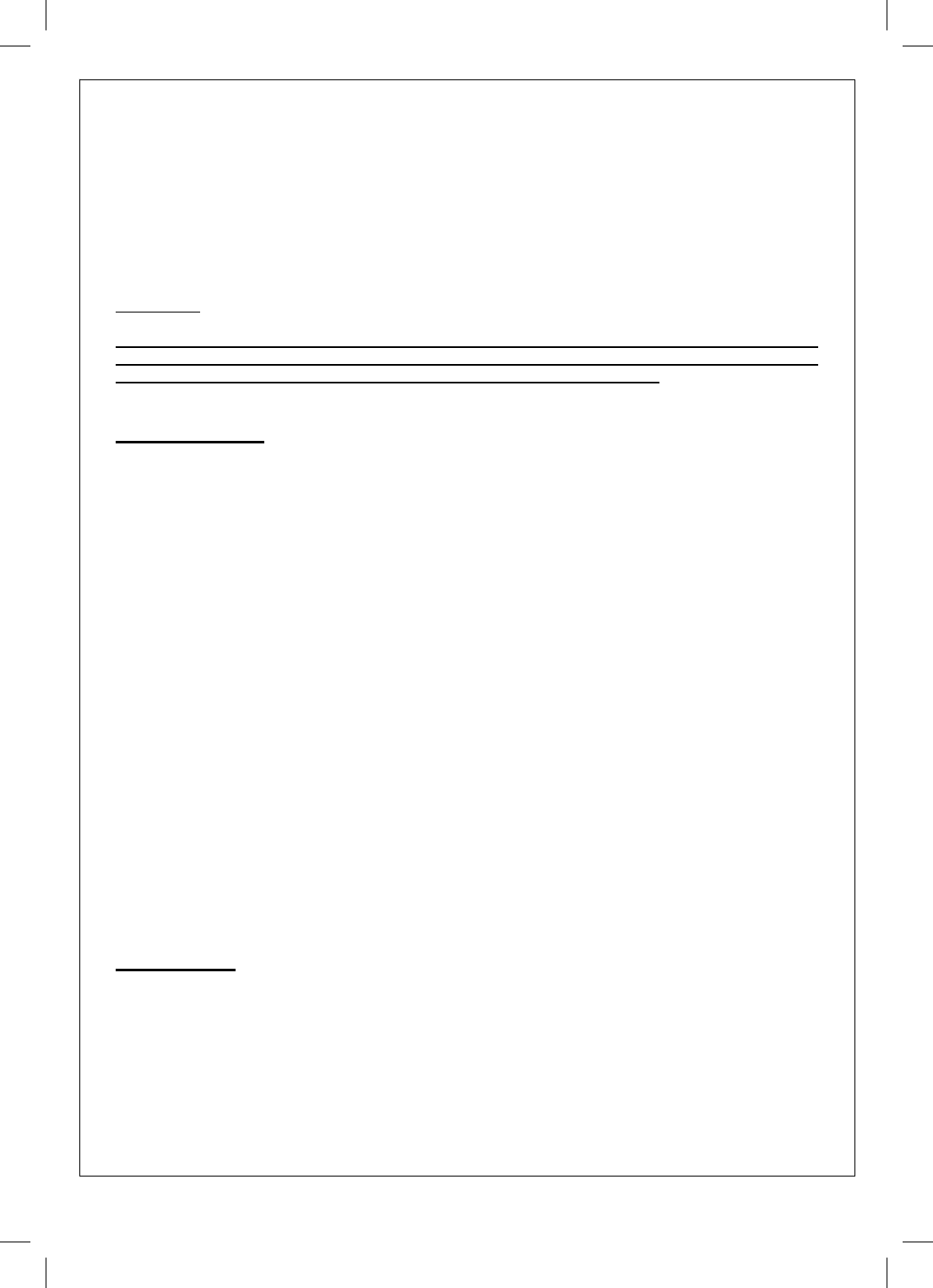
19
Suitable regulator:
Butane – outlet pressure 28mbar
Propane – outlet pressure 37mbar
Hose
• Check that the gas hose does not touch any part of the barbecue that may become hot during
operation.
• If the hose shows any sign of damage it must be replaced with a hose that is suitable for use with
LPG (liquid petroleum gas) and meets British Standards.
• The length of hose should not exceed 1.5 metres.
Please note:
the date on UK orange hose is the date of manufacture – not the expiry date
You must have the correct gas bottle, regulator, and hose for the barbecue to operate safely and
efficiently. Use of an incorrect or faulty regulator is dangerous and will invalidate the warranty
on this product. If you are unsure, please check with your local gas dealer.
INSTALLATION
Precautions:
• Only use this barbecue in a well-ventilated outdoor area.
• Check that the barbecue is not placed UNDER any combustible surface.
• The sides of the barbecue should never be closer than 1 metre to any combustible material.
• Do not obstruct any ventilation openings in the barbecue body
• Confirm all control knobs are in the off position before connecting the regulator.
• Always connect the regulator in accordance with the regulator and gas bottle suppliers instructions.
• The casters should always have the brakes on when the barbecue is in use.
LEAK TESTING
Always perform a leak test in a well-ventilated area.
Step 1 - Confirm all control knobs are in the off position.
Step 2 - Detach the barbecue control panel located across the front of the barbecue body by pulling off
the control knobs and removing the control panel retaining screws.
Step 3 - Turn on the gas at the gas bottle or regulator
Step 4 - Check for leaks by brushing a solution of ½ water and ½ liquid soap over all the gas system
joints, including all valve connections, hose connections, and regulator connections.
Step 5 - If bubbles form over any of the joints there is a leak
• Turn off the gas
• Retighten all joints
• Repeat test
• If bubbles form again do not use the barbecue and contact your local Calor 0800 626 626 dealer
for assistance.
OPERATION
Your barbecue is not designed to be used with more than 50% of the cooking area as a solid plate – this
includes baking dishes. If more than 50% of your cooking area is covered by a solid cooking surface,
the barbecue could overheat causing damage that is not covered by warranty.
Grill cooking
The cast iron burners heat the ceramic briquettes beneath the grill that, in turn, heats the food. The
natural juices produced during cooking fall onto the ceramic briquettes and vaporise to form smoke. The
smoke then rises and ‘bastes’ the food, giving it that unique barbecued flavour.


















